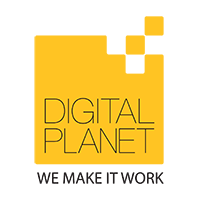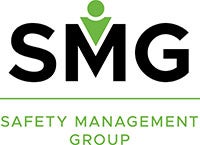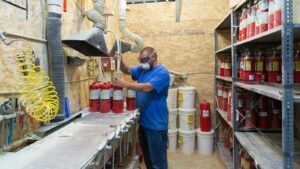Challenges
Inspirus, pronounced “Inspire Us” was founded in 1893 as a jewelry and engraving company servicing the Texas stockyards. In the late 1980s and 1990s, the Fort Worth-based company started working with corporations wanting to recognize employee milestones with lapel pins, which it manufactured, among other products. This blog includes the firm’s history.
By the late 2000s, Inspirus added a digital experience, offering a peer-to-peer recognition and rewards. The company was bought by one of its customers, Sodexo Group (CAC:SW), in 2016.
When CEO Tatiana Frierson joined Inspirus, she asked to see a P&L by customer to better understand the business. What she learned was surprising: the 38-year-old financial system it used couldn’t provide that data. “We couldn’t analyze anything in-depth or extract data live into Excel,” explains CFO Lionel Koch.
Without in-depth data, Frierson knew it would be difficult to digitally transform the company from one helping enterprise customers celebrate employee milestones with award items it warehouses into a SaaS company offering personalized digital reward experiences directed by employees and facilitated online through tailored portals.
She also knew having a modern ERP would give the company a competitive edge in the marketplace where businesses are increasingly facing a myriad of employment issues brought about by the pandemic, including burnout, lower productivity and employees leaving for higher pay or more permanent work-from-home positions. After Covid-19, retaining employees became a higher priority.
“When somebody walks out the door, it costs on average $70,000 to replace that person,” Frierson says. “There’s an impact to the business. What can we do as leaders to help retain that human capital asset in our company? It’s not always about throwing money at them. It’s that people want to feel acknowledged and when they’re acknowledged and recognized, they’re more motivated and less likely to leave.”
Inspirus creates branded digital portals for its enterprise customers—some of which have more than 50,000 employees. The portals allow employees to select reward items, compliment others, and respond to surveys about work satisfaction. The branded portals are like major social media platforms offering a true engagement listening platform.
For reward redemptions that include merchandise, fulfillment is handled out of its warehouse that is stocked with hundreds of brand names that employees know and love. It also has a program where employees can donate their rewards to local nonprofits.
Sparse Customer Data, No MRP, Limited Inventory Visibility
In addition to not providing in-depth customer analysis, the legacy business system was not intuitive, and lacked material requirements planning to coordinate production and purchase orders. Since inventory counts only happened once or twice a year, it was challenging to know when items were out of stock or were sitting on shelves too long hampering cashflow. Demand forecasting was challenging, forcing the company to overstock items and resulting in stock-out situations in other scenarios.
Invoicing was manual with inflexible invoice formats.
“One of the biggest deficits was that it was not a true ERP; it had limited accounting functionality,” says Sue Severns, Inspirus’ Strategic Realization Office Senior Director. Severns was the Acumatica implementation lead and was honored as a 2023 Acumatica MVP. “It also wasn’t able to connect to other systems without custom coding,”
“Before we could only get financial numbers after month-end. You couldn’t’ do anything to effect change within the month,” Severns says.
Employees relied on the development team to run financial reports, and if they didn’t have the time, employees didn’t get the information, she says. Account managers had to go to the filing cabinets for customer account information, which became problematic for teleworkers during the Covid-19 pandemic.
The Inspirus team created a custom web application for online sales, but the application struggled to manage the massive transactional volumes for its enterprise customers.
New ERP a Priority
Frierson had an IT services background with previous SAP and Oracle ERP deployment experiences and made securing a new ERP system her first priority as CEO. “We needed to modernize with a proper ERP,” she says. To increase adoption and buy-in, she wanted everyone involved in the digital transformation. “I told the team ‘This is your deal’ and brought everyone in. It wasn’t someone in IT or the IT team figuring it out. It was a collective effort because everyone was going to use it.” In addition to real-time data visibility and self-service reporting, Inspirus wanted a modern cloud ERP to streamline operations with remote access from anywhere since it has global offices. It also needed to be SOC compliant since Inspirus reports to its publicly-traded parent company, Sodexo.
 Canada (English)
Canada (English)
 Colombia
Colombia
 Caribbean and Puerto Rico
Caribbean and Puerto Rico
 Ecuador
Ecuador
 India
India
 Indonesia
Indonesia
 Ireland
Ireland
 Malaysia
Malaysia
 Mexico
Mexico
 Panama
Panama
 Peru
Peru
 Philippines
Philippines
 Singapore
Singapore
 South Africa
South Africa
 Sri Lanka
Sri Lanka
 Thailand
Thailand
 United Kingdom
United Kingdom
 United States
United States








